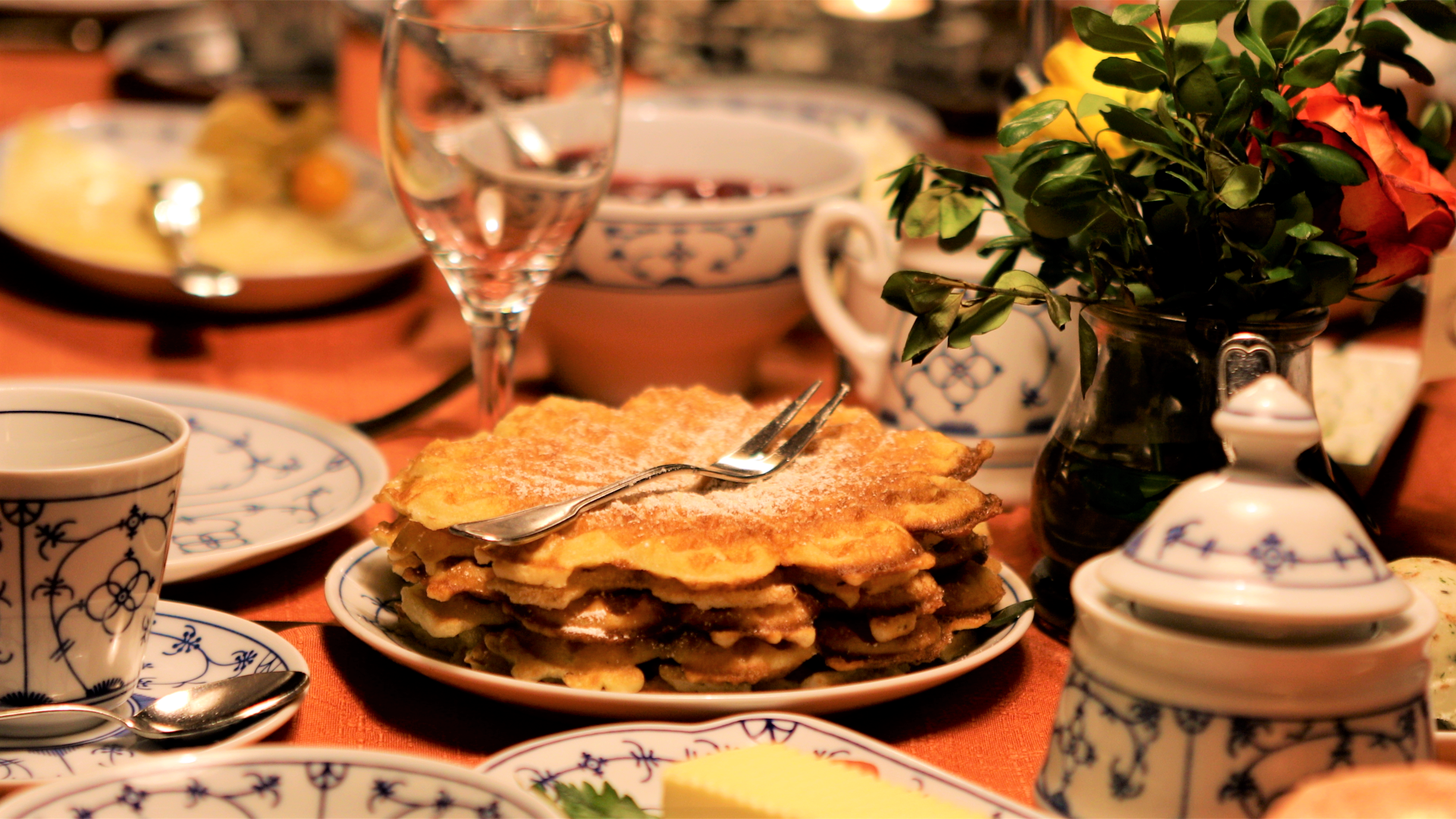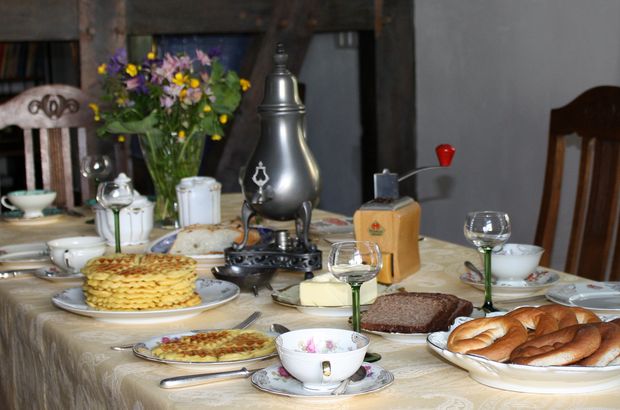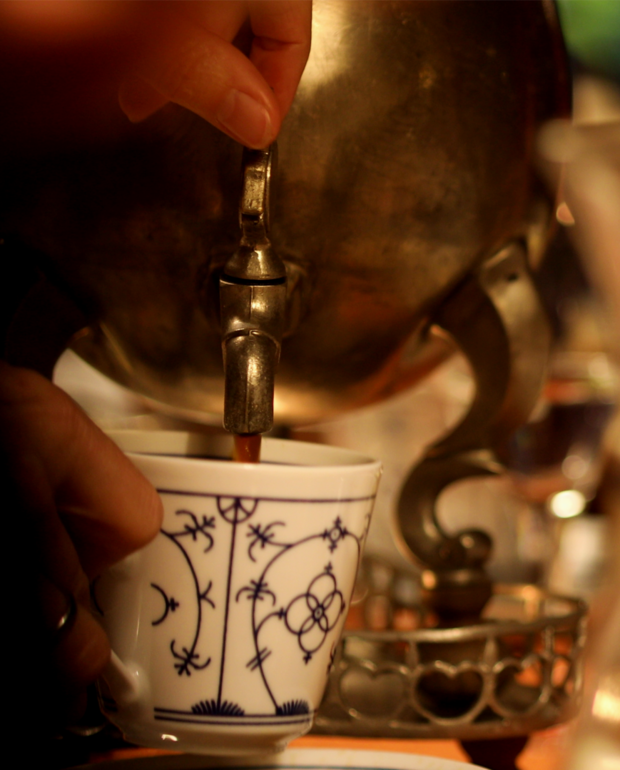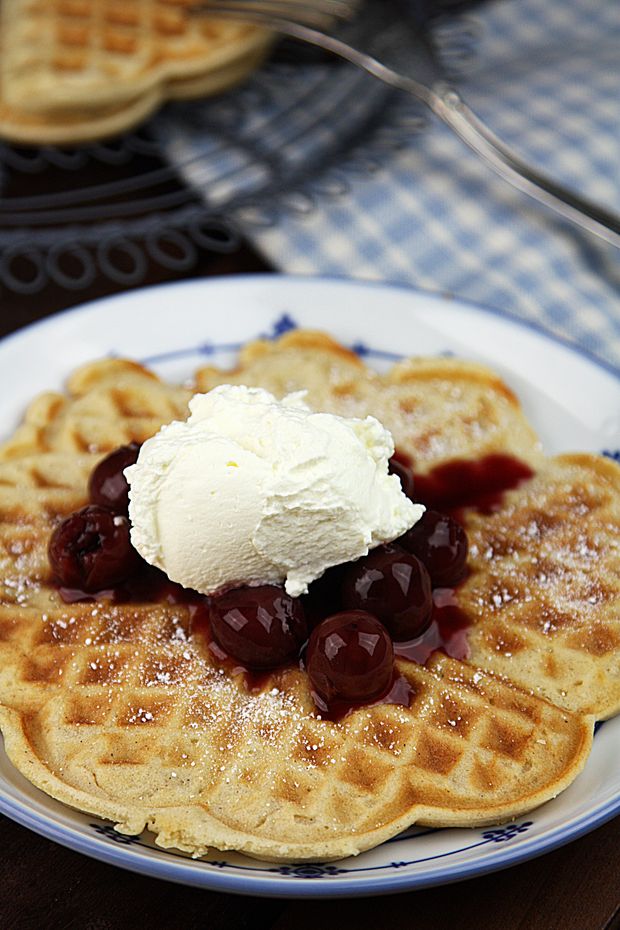Bergische Kaffeetafel
The "Bergisch Kaffeetafel" still stands for hospitality and a convivial get-together. In the company of others, various types of Bergisch bread, butter, curd cheese, honey, apple and turnip cabbage, rice pudding, cold cuts and waffles with hot cherries and cream are served. Coffee is served, dripping comfortably from a typical pot, the Dröppelmina.
Once a colourful festive feast
As early as the beginning of the 18th century, the Bergische Kaffeetafel was known as a colourful festive feast in the family circle. Since the Bergisches Land was a poor region, everyone invited brought something to eat. In the course of time, a fixed order of dishes developed and each family had its own preferences, so that in some places Rodon cake, Burger pretzels and gussied biscuits or Pannenbrei with bacon can be found on the table.
Course after course a delight
The first course traditionally consists of a slice of "Krentensemel" (currants) spread thickly with butter and cabbage. On top of this you put a finger-thick layer of "stiewen Ries" (stiff rice porridge) with a little cinnamon and sugar. The second course is the Bergische Waffle, which used to be eaten only with applesauce in very poor times and was made of oatmeal. The third course is a slice of Bergisches "Schwattbruat" (black bread) with butter and "Klatschkaes" (curd cheese), with a little apple or turnip cabbage on top if you like. Sometimes farm cheese, home-made sausages and home-smoked ham were also served. A "Klarer" ("Kloarer") or a "Aufgesetzter" ("Opjesadden") concludes the meal. Even if the combination of dishes may seem a little strange to foreigners at first, the Bergische Kaffeetafel quickly becomes very popular with tourists.



